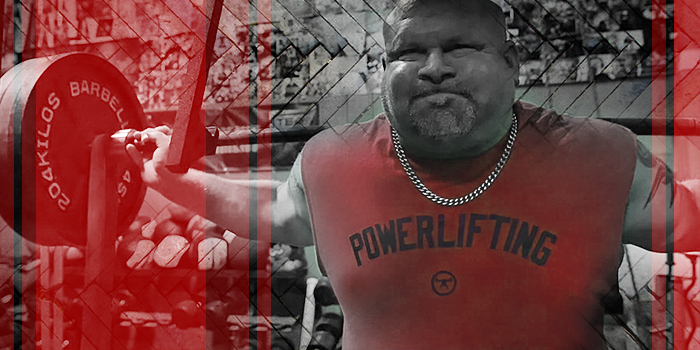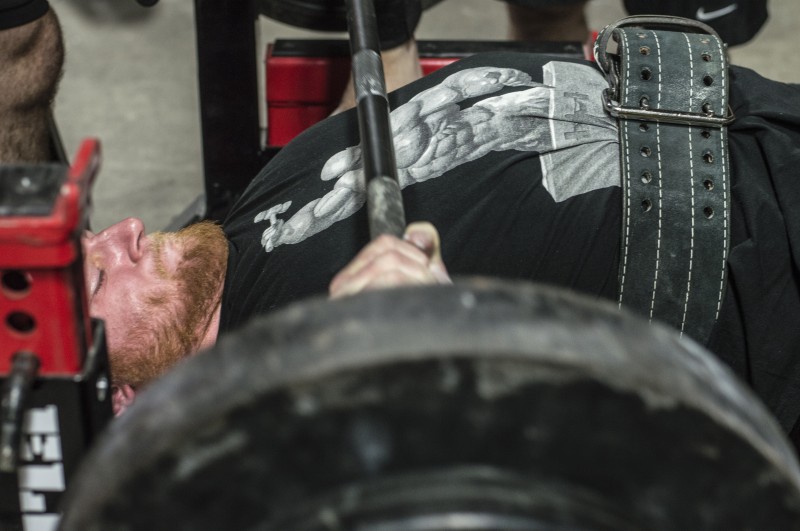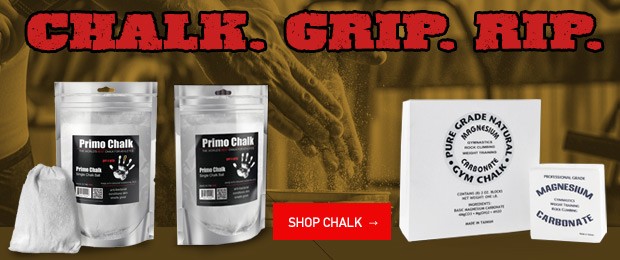
Every lift, whether it is the squat, deadlift, or bench, starts with gripping the bar. All too often we take this aspect of the lift for granted. How you attack and grip the bar to start the lift can greatly affect the outcome of the lift. In each lift, failure to grip the bar properly will result in failure to complete the lift.
The Squat
Many lifters think that because the bar is sitting atop the shoulders, grip is not vital to the squat. This is false. The grip is even more important in the squat than in many other lifts. As you drive into the bar out of the hole, grip is what keeps you under the bar. As a lifter sets up for the squat, the lifter should first determine hand position and width, making sure the grip is equal and even.
When training, the hand position should be wider for a lot of reasons. For one, it relieves pressure on the bicep tendons, which can become aggravated using a narrower grip. Second, during training, a lifter should learn to engage their upper back and not rely on torquing themselves under the bar.
MORE: Grip Program to Never Drop a Deadlift
Once in competition, or when taking a heavy single in training, the lifter should move their grip in slightly to help increase the tightness of the upper back. Next, dig the crease between the index finger and thumb into the bar, wrapping the remaining fingers around the bar and attempt to crush the bar with your grip. What does this do in the squat? This gripping of the bar aids in upper back tightness, because without a firm grip on the bar, a lifter cannot properly pull the bar into their upper back. When doing this, a lifter should be essentially trying to bend the bar around them. This allows the lifter to keep the bar from rolling off the back.
The Bench
How you grip the bar in the bench can make or break the lift. All too often lifters, especially beginner lifters, take this aspect of the lift for granted and just let the bar sit in their hands. Whether you false grip or full grip the bar, it is important to squeeze the bar. In both cases, dig the bar into the crease between the index finger and thumb, wrapping the remaining fingers around the bar. Squeeze the bar such that your knuckles turn white. If using a false grip, at this point pry the thumb around the bar to open the grip, not easing up on the squeezing of the bar. By maintaining a squeeze on the bar you are ensuring the triceps are engaged from the very start of the lift.
As a lifter presses the bar off their chest, you will often see the bar pop quickly to start and then stall about mid-press before the lifter finally presses to lockout. This happens when the triceps are not engaged from the start and the lifter doesn't press with the triceps as the bar leaves the chest. By squeezing the bar, this stalling should not occur.
Hand placement and where you grip the bar in the bench is also important. A wider grip will be more chest- and shoulder-dominant, where the closer grip will be more triceps-dominant.
The Deadlift
It is obvious how important grip is in the deadlift. Whether you use an under/over grip or the double-overhand hook grip, a good firm grip is crucial to success in the deadlift. Digging that grip into the bar and squeezing that bar is a must. Almost as important as the tightness of the grip is the grip placement. If the hands are too close it can cause your arms to get locked up as you try to bring the chest through at lockout. This will then prevent you from being able to pull the shoulders back at lockout. If the grip is too wide then you shorten the length of the arms, forcing you to bend further at the waist. This makes the lift more difficult, as you now have to pull through a greater range of motion. It is for this reason, when placing the hands at setup, the hands should be about shoulder-width —whether pulling sumo or conventional — to ensure the fullest length of the arms and still allow room for the chest to come through at the top.
Use these guidelines and don't neglect your grip.











